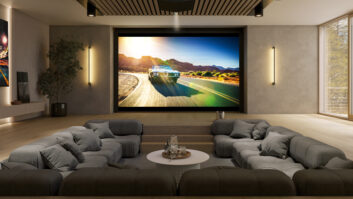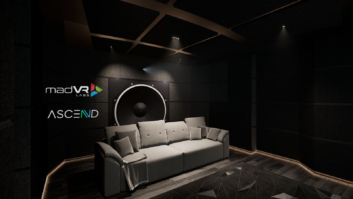Demonstrating the Benefits of Lighting Control

There’s nothing quite like experiencing lighting control in an actual home, like this one in Philadelphia, with a Crestron lighting control system installed by Creative Systems.
Over the years, savvy custom integrators have realized that the “lifestyle” or “experience” presentation is essential to a successful integrated home system sale. And perhaps no other ingredient in the integrated package requires experiential selling more than the lighting and shades control system, for which a simple verbal description or set of photographs just can’t compare to walking through a home or design center with artistically dimmed lighting and magically controlled window shades.
“It is very difficult to sell the benefits of lighting control; you have to experience the benefits,” agreed Rich Black, product development manager for Lutron. “There’s a big difference between telling someone and showing someone that one button can turn off the lights, close the shades and draperies, and lower the temperature. Customers absolutely have an ‘a-ha’ moment when they press that button themselves and see the lights and shades changing around them.”
To that end, Lutron has opened Experience Centers throughout the country to give customers that very experience.
Crestron’s director of residential market development, Ami Wright, concurred that a dealer “absolutely must have the client experience” lighting control, noting that a showroom is the most effective way, followed by demo displays, and at a minimum, samples of keypads and dimmers in conjunction with literature. “Additionally, a video is an excellent complementary tool to present the experience,” she said. “You can watch it together with the client, send it electronically, or leave it behind.”
Wright added that selling lighting control requires an integrator to become an amazing storyteller, as well. “As you are providing the experience, use specific examples of how they will live with lighting control and benefit from it,” she said. “Explain scenarios such as going to bed and pressing ‘Goodnight’ to turn all the lights off, having all the lights automatically turn on and flash when the security alarm has been triggered, and being able to press a ‘Good Morning’ button from your bedside that creates a pathway of light throughout the house and opens the shades.”
And, don’t forget to point out the more obvious (to an integrator) benefits of lighting control. Lighting control enhances the aesthetics of a space by removing wall clutter, giving you the ability to easily change the look and feel of the room, and highlight different design and decor elements of the home. “Although it’s not easy to see it happen, it’s important to explain how lighting control is one of the easiest ways to save energy and do one’s part to contribute to a greener world,” Wright added.

Lutron has opened Experience Centers throughout the country to give customers a simulated home lighting control experience. This room in the company’s New York City facility offers a traditional showroom of shading materials and dimmer controls.
Vantage Controls VP of marketing Andrew Wale noted that manufacturers and installers need to emphasize the user experience, especially to those consumers who have yet to try a system firsthand. “Many consumers know little about the category, or, worse, have had a bad experience with a lowend product,” he noted. “Dealers must therefore be relentless about how the latest, technologically advanced systems will drastically improve the enduser’s lifestyle, each and every day.”
HAI’s associate director of marketing, Greg Rhoades, said that he believes the key to effectively selling lighting control is proving how many purposes lighting serves. “Lights provide security on an exterior, prep in a kitchen, eating in a dining area, entertainment in a media room,” he stated. “It’s important to make the end-user realize how many different settings they use, and how easy it would be if these settings were all automated and easily controllable.”
LiteTouch’s VP of sales and marketing, Angie Larson, said that for any dealer or electrical contractor to sell lighting control to a homeowner effectively, there are four main benefits to emphasize: the convenience of scenes, master and area-off switches, and vacation timers; the aesthetics of distinct, single-gang, low-voltage keypads versus banks of toggle and dimmer switches; the security of a panic button, safety lighting, and remote system access; and the energy reduction opportunity offered by setting maximum lighting levels, astronomical timers, and conditional settings for peak energy hours.
“Dealers and contractors should also highlight how a lighting control system can effectively integrate with other home automation subsystems, motion and occupancy sensors, and automated window coverings,” Larson added.
Scott Klodowski , director of sales and marketing at Powerline Control Systems Inc., believes that the key is being able to translate his company’s PulseWorx technology for the customer, so that dealers communicate what lighting controls will do for their lifestyle, including providing convenience, security, and a bit of “cool-factor.”
“Really stretching your imagination in system configuration is what excites the customer,” he explained. “Walking them through examples like, ‘You could be driving home from dinner and easily turn on the front lights all from your smartphone,” will give customers real-world examples of how lighting control systems can better their lives. Demonstrating how affordable and scalable the product is plays its part, too. So we point out that most of the other systems cost twice as much as ours and don’t give end users the capability of changing things on their own without rolling a truck to the jobsite.”
Jeremy J. Glowacki ([email protected]) is editorial director of Residential Systems.







